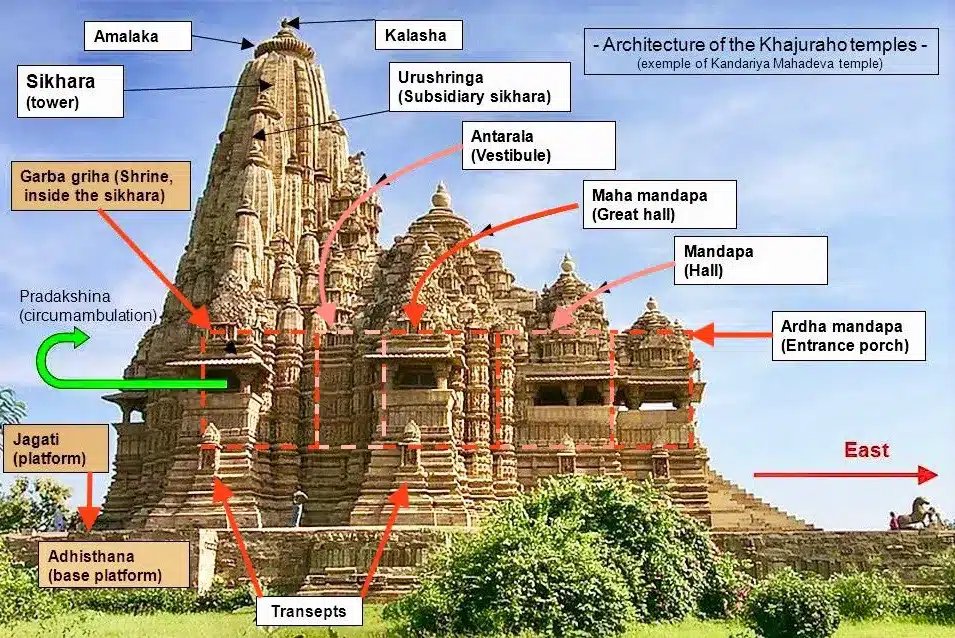
History Temple Control in India
- Ancient Patronage: Temples served as cultural and economic centres, often funded by kings and wealthy patrons who donated land and resources, establishing them as significant societal institutions.
- Colonial Interference: The British colonial government viewed temples as sites of wealth and influence, enacting laws between 1810 and 1817 to gain oversight and control over their administration.
- Religious Endowments Act of 1863: This act addressed corruption and misappropriation of temple funds by transferring management from local leaders to government-appointed committees.
- Madras Hindu Religious Endowments Act of 1925: Formalised government oversight of temples in southern India, allowing for extensive regulation and control over temple finances and administration.
- Post-Independence Continuity: Independent India retained much of the legislative framework established during colonial rule, with various states enacting similar laws to maintain control over temples.
- Social Integration Argument: It was argued that oversight was necessary to ensure inclusivity in temple access & management and promote social harmony among different castes and community groups.
Current Governance Structure of Hindu Temples
- State Control: Many Hindu temples are managed by state governments, which have enacted laws to regulate temple administration and finances.
- Dedicated Departments: States like Tamil Nadu have established specific departments, such as the Hindu Religious and Charitable Endowments Department, to oversee temple operations.
- Government-Appointed Boards: Temples are often governed by boards or trusts that include government representatives or officials, giving the state significant influence over decision-making.
- Revenue Sharing: State governments typically share temple income from offerings and donations, using the funds for temple maintenance and various welfare activities.
- Legal Framework: Temple governance is guided by laws rooted in colonial legislation, with provisions for oversight and regulation under the Concurrent List of the Constitution.
Demands for Community Management
- Historical Resolutions: Hindu organisations have advocated for restoring temple control to local communities since 1959, emphasising grassroots governance.
- Political Advocacy: Hindutva groups have increasingly called for legislative changes to free temples from government oversight, framing it as a restoration of cultural heritage.
- Protests and Campaigns: Throughout the years, various protests led by religious leaders and local communities have highlighted grievances against government control and advocated for autonomy.
- Recent Legislative Attempts: Some state governments have initiated or withdrawn laws to loosen state control over temples in response to public pressure.
- Public Sentiment: Growing public sentiment against perceived government overreach in temple management has fueled calls for reforms, with many arguing for upholding religious freedoms.
- Tirupati Controversy as a Catalyst: The recent controversy surrounding the Tirupati laddoo has intensified demands for temple autonomy. Hindutva organisations use it as a rallying point to argue that government control undermines religious significance and local traditions.
Judicial Viewpoint
- Reluctant Intervention: Courts typically avoid interfering in temple management, upholding laws that permit state regulation.
- Fundamental Rights: The SC acknowledges religious denominations’ fundamental right to manage their affairs, subject to reasonable state regulation.
- Public Welfare Justification: Courts often justify state oversight by citing concerns about mismanagement and corruption, emphasising the need for regulation in the public interest.
- Status Quo Maintenance: Recent rulings have supported existing government control, suggesting it helps temples serve broader societal needs.
- Key Case Precedents: Cases like the Shirur Mutt case established that laws removing management rights from religious groups can violate Article 26 of the Constitution.
Author: Arjun Kr. Paul
Comments (0)
Categories
Recent posts


Q5/ Section B, APSC Mains 2024 Essay - ...
29 Jul 2024
Q8/ Section B, APSC Mains 2024 Essay- ...
29 Jul 2024
Q 1/Section A, APSC Mains 2024 Essay - ...
29 Jul 2024



